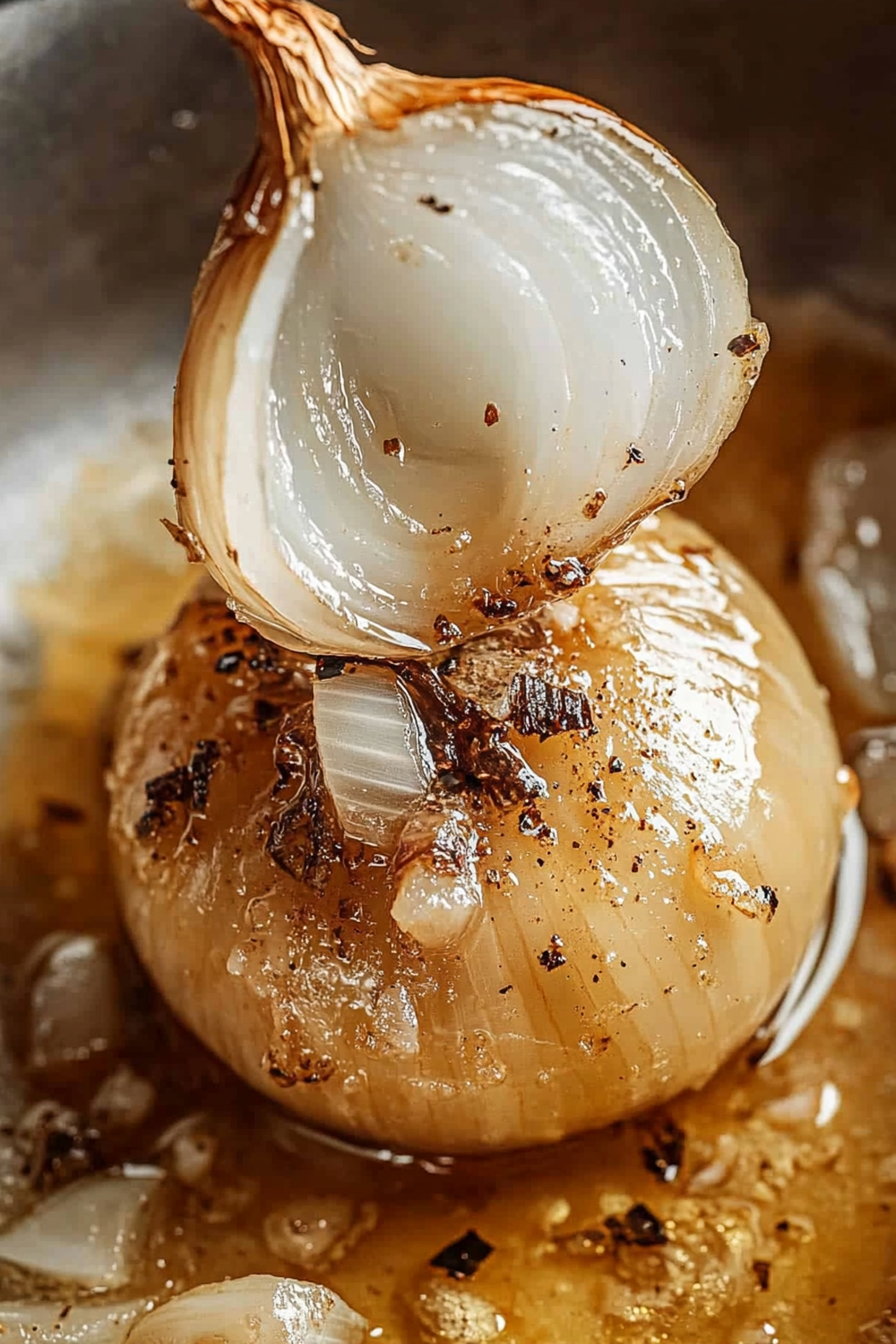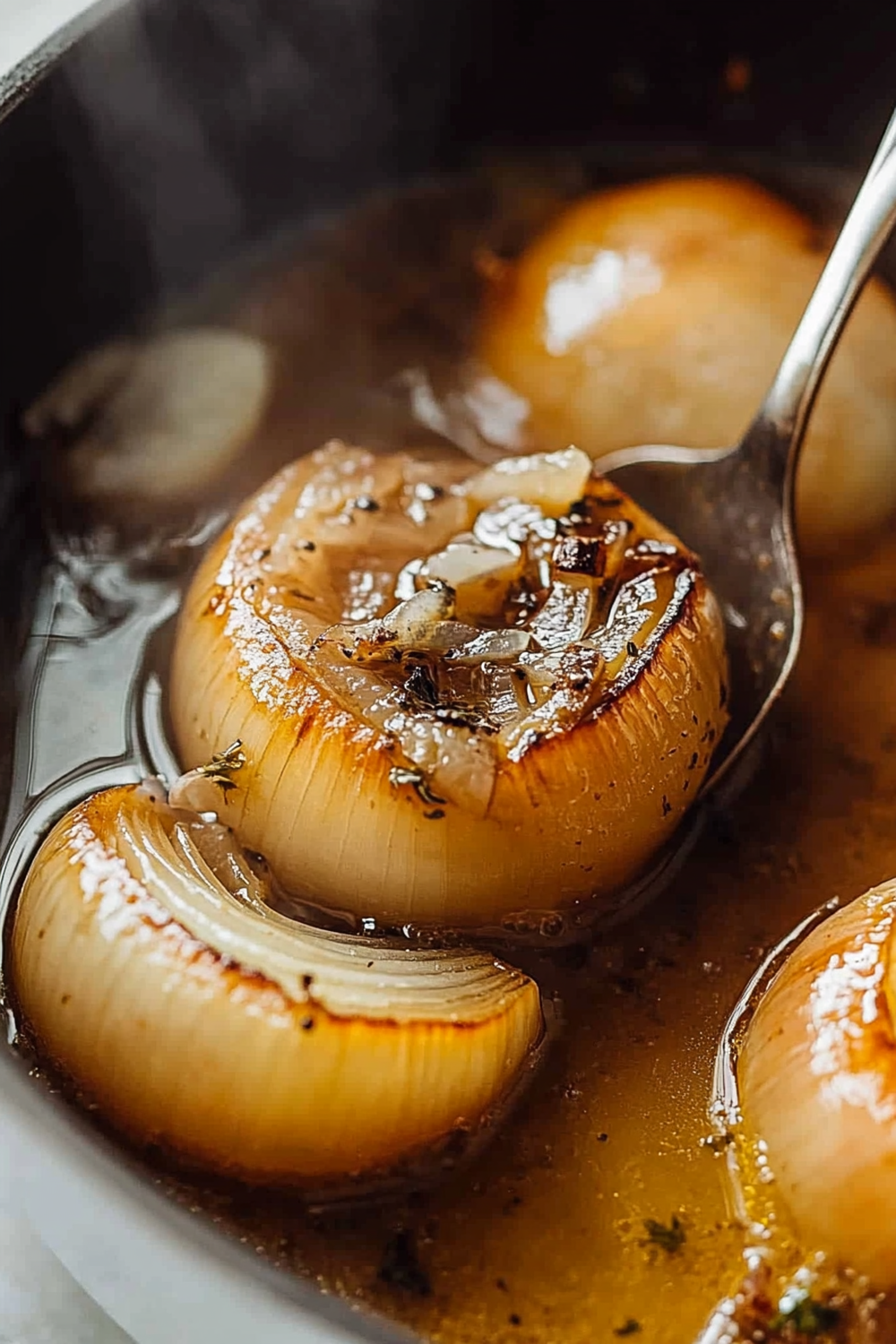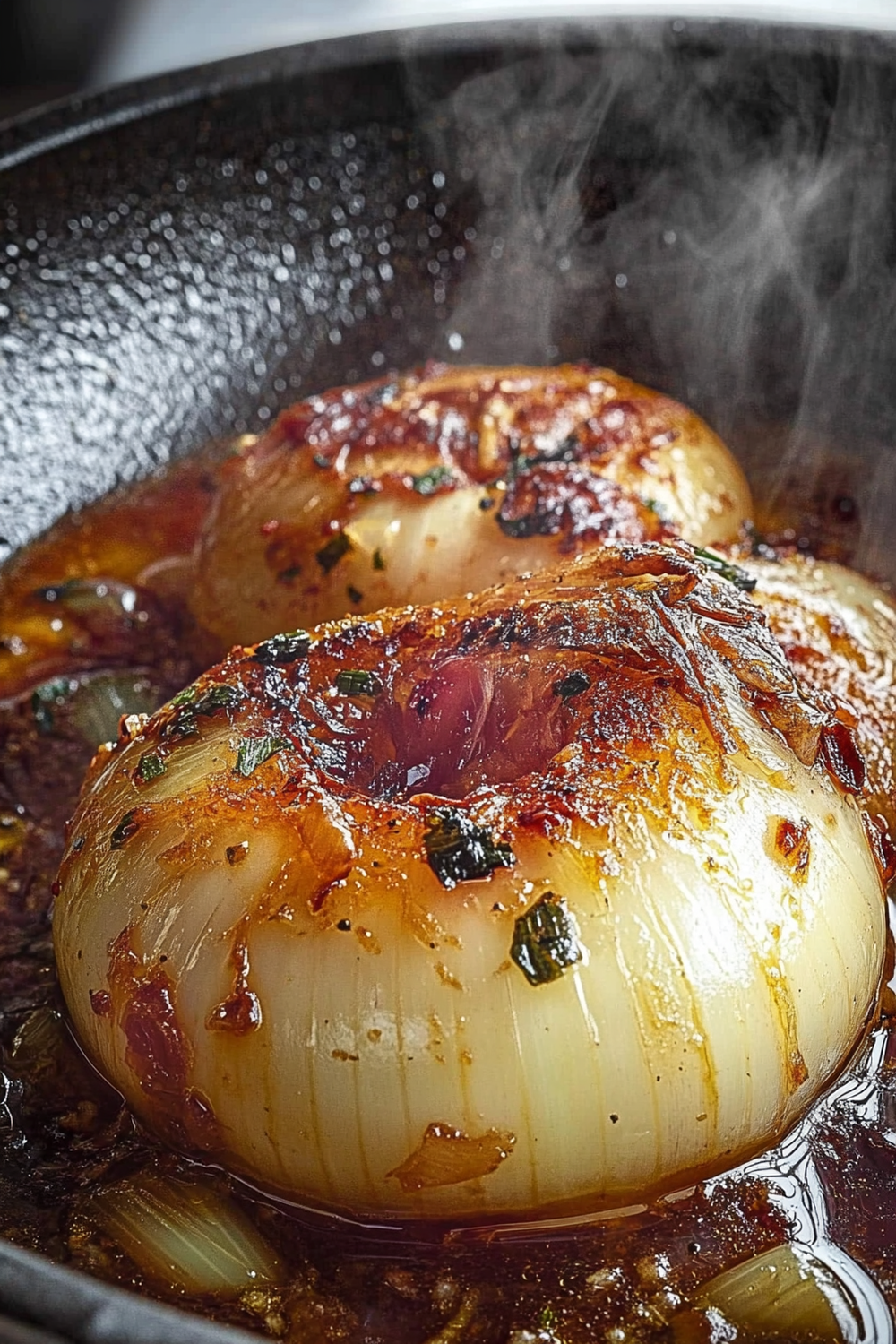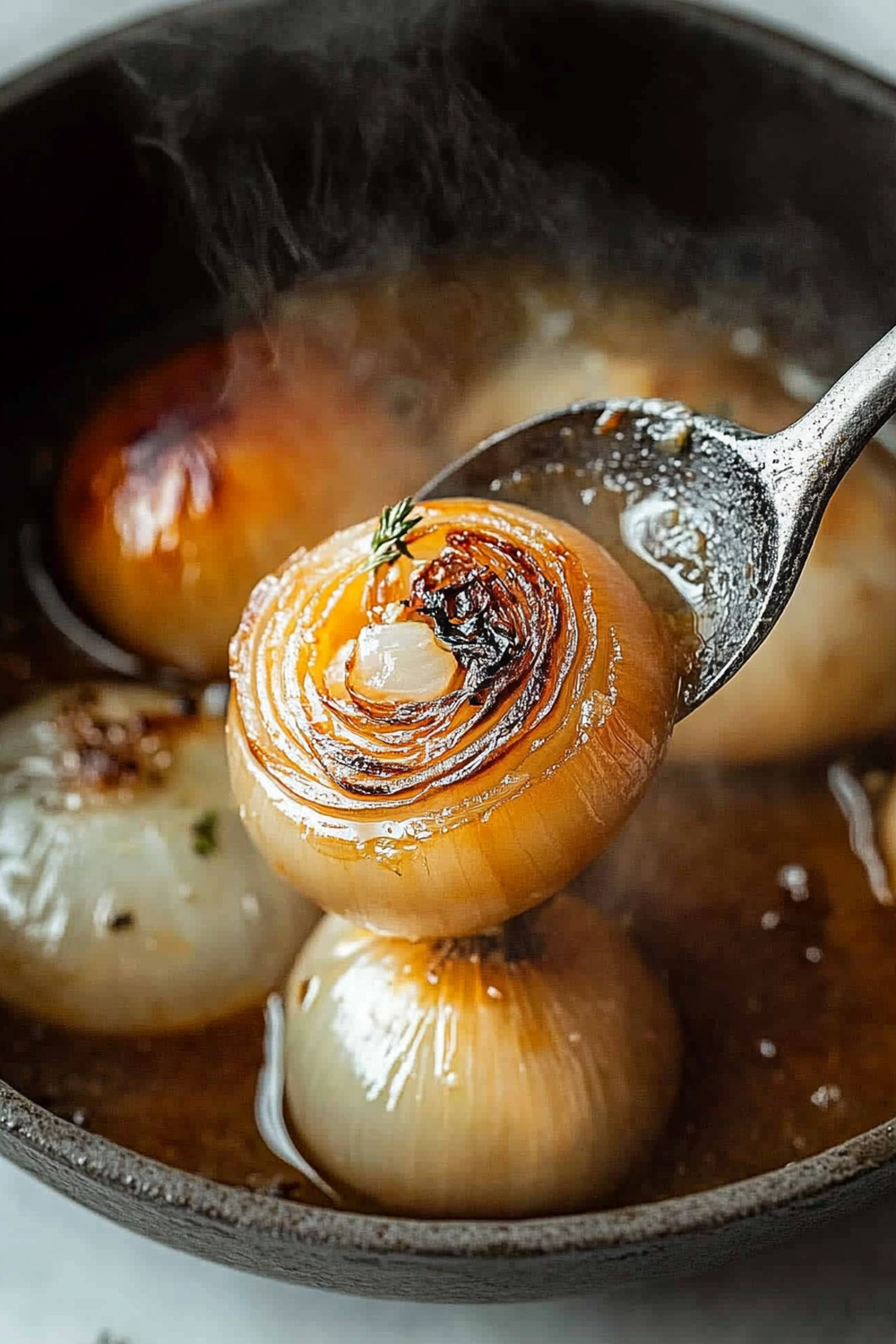Onion boil is a delightful dish that brings out the natural sweetness of onions while infusing them with aromatic spices and flavors. This hearty dish is not only easy to prepare but also makes for a comforting meal that can be enjoyed by everyone. Whether you’re looking to impress your guests or simply want a nutritious dinner option, this onion boil recipe will have you covered.

In this post, we will take you through the essential ingredients required for making the perfect onion boil. We’ll also provide step-by-step instructions to ensure that you achieve the best results. Finally, we’ll share some tips on how to serve and store your dish effectively. With just a few ingredients and our easy-to-follow guide, you’ll be able to create a delicious onion boil that can stand alone or complement other dishes at your table. Let’s dive into this culinary adventure!
Main Ingredients
Fresh Onions
Fresh onions are the star of this dish. You can use yellow, white, or red onions based on your taste preference. Yellow onions offer a balanced flavor that works well in most recipes. Red onions provide a sweeter taste with vibrant color, while white onions are milder. For this recipe, you will need approximately 2 pounds of fresh onions.
Garlic Cloves
Garlic adds depth and aroma to your onion boil. Use about 4-5 cloves of minced garlic to enhance the flavor profile of the dish. Garlic not only complements the sweetness of the onions but also offers numerous health benefits including anti-inflammatory properties.
Olive Oil
Olive oil is essential for sautéing the vegetables and enhancing their flavors. You’ll need about 3 tablespoons of extra virgin olive oil for this recipe. It also adds healthy fats which are beneficial for heart health.
Vegetable Broth
Using vegetable broth as a base enriches the overall taste of your onion boil. Aim for around 4 cups of low-sodium vegetable broth to keep control over the salt content while ensuring robust flavor in every bite.
Herbs and Spices
A combination of herbs and spices elevates your onion boil significantly. You’ll require salt, pepper, thyme, and bay leaves—approximately 1 teaspoon each (adjust according to taste). These ingredients work together to create layers of flavor that make every spoonful enjoyable.

How to Prepare Onion Boil
Step 1: Preparing the Onions
Start by peeling your selected onions and cutting them into quarters or eighths based on their size. The goal is to create uniform pieces that will cook evenly during boiling. After chopping them up, set them aside in a bowl while you prepare garlic and other ingredients.
Step 2: Sautéing Garlic and Onions
In a large pot or Dutch oven, heat olive oil over medium heat until it shimmers but does not smoke. Add minced garlic first; stir it for about one minute until fragrant but not browned—this releases its essential oils without burning it. Immediately follow by adding chopped onions into the pot; sauté them until they become translucent—about 8-10 minutes should suffice.
Step 3: Adding Broth and Seasonings
Once the onions are nicely sautéed, pour in your vegetable broth while scraping any brown bits off the bottom of the pot with a wooden spoon—this adds flavor! Stir in salt, pepper, thyme, and bay leaves so they distribute evenly throughout the broth mixture.
Step 4: Simmering Your Dish
Bring everything to a gentle simmer over low heat; cover your pot loosely with a lid allowing steam to escape slowly for optimal cooking conditions. Let it simmer for about 30 minutes; this allows flavors from all ingredients to meld beautifully together resulting in an aromatic experience! Check occasionally stirring gently—if necessary add water if it thickens too much during simmering.
Step 5: Final Adjustments
After simmering time is up; taste test! Adjust seasonings according to personal preferences—adding more salt or pepper if needed before serving up warm bowls filled with this delicious creation! You might even want some crusty bread on hand as an accompaniment!

Serving and Storing Tips
Serving Suggestions
When serving your delicious onion boil consider pairing it with crusty bread or even over fluffy rice! Garnish each bowl with fresh herbs like parsley or chives bringing extra color vibrancy while enhancing nutrition levels as well! It’s an ideal cozy meal especially during chilly evenings when comfort food is highly desired! Make sure you serve it warm garnished appropriately so guests appreciate both presentation & flavor fully!
Storing Leftovers
If you happen to have leftovers after enjoying this hearty dish don’t worry! Store them in an airtight container within refrigerator once cooled down—this way they remain fresh longer keeping at least three days maximum before needing consumption again! When ready reheat gently over low heat until warmed through thoroughly ensuring no loss in quality occurs during storage process!
By following these steps along with mindful storage techniques enjoy great flavors repeatedly without sacrificing freshness—the essence behind every good meal lies within both preparation & preservation efforts combined together harmoniously!
Mistakes to avoid
One of the most common mistakes when preparing an onion boil is not properly selecting the onions. Choose fresh, firm onions that are free from blemishes or soft spots. Using older or spoiled onions can lead to an off-putting flavor and texture. Ensure that you also consider the type of onion you use. Different varieties, such as yellow, red, or sweet onions, impart different flavors to your dish. A yellow onion is usually ideal for boiling because it balances sweetness with pungency.
Another significant mistake is overcooking the onions. Overcooked onions become mushy and lose their natural sweetness. It is crucial to monitor the cooking time closely. Generally, boiling onions should take about 15-20 minutes until they are tender but still hold their shape. You can test their doneness by inserting a fork; it should slide in easily but not fall apart.
Failing to season adequately is yet another error that can ruin your onion boil. Onions absorb flavors during cooking, so it’s essential to season the water properly. Use a combination of salt, pepper, and herbs like thyme or bay leaves to enhance the taste of the onions as they cook. A bland boil will not only disappoint your taste buds but also make it harder for other ingredients to shine.
Moreover, neglecting proper storage after cooking can lead to wasted leftovers. If you have any boiled onions remaining, store them in an airtight container in the refrigerator. They can last for up to five days if stored correctly; however, ensure you reheat them thoroughly before eating.

Tips and tricks
To achieve the best results with your onion boil, start by peeling and cutting your onions uniformly. This ensures even cooking throughout the batch. If you cut some pieces larger than others, they will cook at different rates, resulting in a mix of overcooked and undercooked onions.
Consider adding aromatics such as garlic or ginger to elevate the flavors of your onion boil. These ingredients complement onions wonderfully and contribute additional layers of taste and aroma. You can add minced garlic or sliced ginger directly into the boiling water along with your onion.
Using high-quality water is also crucial for enhancing flavor in your onion boil. If possible, use filtered or spring water rather than tap water, which may contain minerals that alter the flavor profile of your dish.
Another handy tip is to incorporate vinegar into your boiling liquid. A splash of apple cider vinegar or white wine vinegar can brighten up the overall flavor and cut through the sweetness of the onions nicely. It adds acidity that balances out their natural sugars.
Lastly, always keep a close eye on cooking times! Since boiling times can vary based on onion size and type, performing regular taste tests ensures you achieve perfect tenderness without going too far.
Suggestions for Onion Boil
When planning an onion boil, think about pairing it with complementary dishes for a complete meal experience. For example, grilled meats such as chicken or steak go exceptionally well with boiled onions due to their rich flavors that contrast nicely with sweet onions’ subtlety.
Experimenting with different types of broth instead of plain water can also significantly enhance your dish’s flavor profile. Consider using vegetable broth or chicken stock as a base for boiling your onions; this will infuse additional savory notes into every bite.
If you’re looking for a unique twist on traditional recipes, try adding some spice! Incorporating chili flakes or diced jalapeños into your boiling liquid can offer a delightful kick that contrasts beautifully with sweet-boiled onions.
Don’t hesitate to serve boiled onions alongside various dipping sauces as well! A tangy mustard sauce or a creamy ranch dressing makes excellent accompaniments that enhance both flavor and presentation at mealtime.
Lastly, think about garnishing your dish with fresh herbs after cooking; parsley or chives work wonders when sprinkled atop boiled onions just before serving!

FAQs
What are some common uses for boiled onions?
Boiled onions serve multiple purposes in culinary applications! They can be enjoyed as standalone sides or added into salads for extra flavor and texture. Additionally, they work well in soups and stews where they blend seamlessly into rich broths while enhancing overall depth!
Can I use different types of onions for boiling?
Absolutely! While yellow onions are commonly preferred due to their balanced flavor profile during boiling processes—red and sweet varieties offer unique tastes worth exploring! Red onions bring vibrant color alongside mild sweetness while sweet varieties add caramel-like notes when cooked!
How do I know when my boiled onions are done?
To determine doneness while boiling your onions: insert a fork gently into one piece—it should glide through without resistance yet retain its shape! Cooking times may vary depending on size/type; typically expect around 15-20 minutes total cooking time!
Are there any health benefits associated with eating boiled onions?
Yes! Boiled onions retain many nutrients found within raw forms—antioxidants like quercetin support immune function while promoting heart health! Moreover, consuming cooked versions helps ease digestive discomfort thanks to their soluble fiber content!
Can I freeze leftover boiled onions?
Certainly! Freezing leftover boiled onions is an excellent way to minimize waste! Ensure that they cool completely before placing them into airtight containers—properly stored frozen batches can last up six months without losing quality!
What should I do if my boiled onions turn out mushy?
If mishaps occur resulting in mushy boiled output—consider repurposing them into other dishes such as mashed potatoes or pureed soups where texture isn’t paramount! Alternatively—you could sauté them briefly over medium heat until moisture evaporates improving consistency slightly!
In summary, mastering the art of making a delicious onion boil involves careful attention to detail throughout each step—from selecting fresh ingredients to monitoring cooking times closely. Avoiding common mistakes like overcooking or improper seasoning ensures optimal results every time you prepare this simple yet flavorful dish.
Incorporating useful tips—including using quality water and experimenting with aromatics—can further elevate flavors significantly enriching the overall experience when served alongside complementary foods like grilled meats or dipping sauces!
Pay attention also when storing any leftovers appropriately so they’re available later without compromising quality—this reduces food waste while offering convenience throughout the busy weeks ahead!
By keeping these suggestions in mind alongside answering common FAQs regarding preparation techniques—you’ll find yourself confident navigating through culinary creations featuring delightful, boiled onion dishes effortlessly at home!

